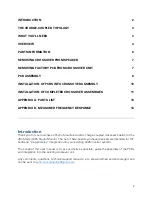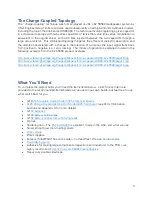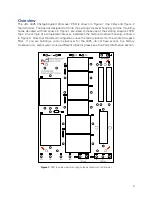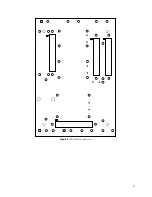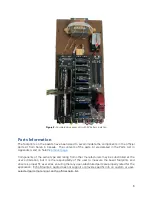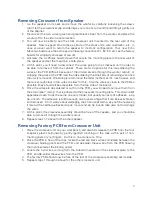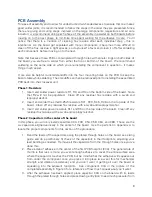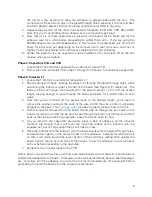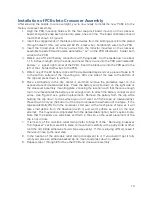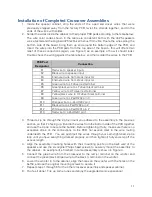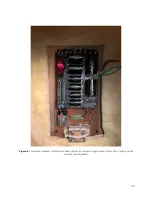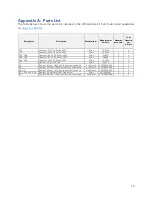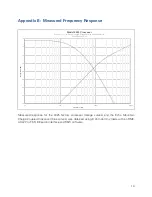
8
PCB Assembly
For ease of assembly and to allow for unobstructed two
-
handed access to ensure that one makes
good solder joints, it is recommended to follow the steps in the order they are presented. Since
there are gluing and curing steps involved on the large components (capacitors and air core
inductor), we recommend doing each phase of the assembly in parallel on both boards before
moving on to the next phase, to minimize time spent waiting for the adhesive to cure. You’ll
notice that there is a mention of cleaning flux residue after each individual step – this is
intentional. As the board get populated with more components, it becomes more difficult to
clean off the flux residue in tight spaces, so do yourself a favor and clean it off after soldering
each component, before moving on to the next.
Note that because these PCBs contain plated through holes with annular rings on both sides of
the board, you are free to solder from either the top or bottom of the board. We recommend
soldering on the same side on which you are installing the component in question – it makes
things much easier.
It can also be helpful to install standoffs into the four mounting holes on the PCB to keep the
board stable while soldering. The standoffs can then be removed prior to installing the assembled
PCB back into the crossover unit.
Phase 1: Resistors
1.
Insert and solder power resistors R1, R3, and R4 on the bottom side of the board. Note
that R2 will not be populated. Clean off any residual flux residue with a swab and
isopropyl alcohol.
2.
Insert and solder the small 0.25W resistors RC1, RC3, RC5, RC8 on the top side of the
board. Clean off any residual flux residue with a swab and isopropyl alcohol.
3.
Insert and solder power resistors RL1 and R5 on the top side of the board. Clean off any
residual flux residue with a swab and isopropyl alcohol.
Phase 2: Capacitors in the center of the board
In this phase, you will only install capacitors C3A, C3B, C5A, C5B, C8A, and C8B. These are the
six capacitors aligned vertically in the center of the board. Use the parts list in Appendix A to
locate the proper components for this section of the procedure.
1.
Bend the leads of the capacitors using the plated through holes on the board as a sizing
guide and do a preliminary fit check of the capacitors in their footprints, adjusting your
lead bending as needed. Remove all the capacitors from the through holes once you’ve
done this.
2.
Place a dab of adhesive in the center of the first PCB footprint (C3A). The general rule of
thumb is that less is more; you want enough adhesive to cover the entire surface area
where the capacitor touches the PCB, but be mindful that the adhesive will squeeze out
from under the component once you press it into place (we want this for mechanical
strength and vibration resistance), and you don’t want it getting all over the board or
squeezing into the adjacent footprints. See component C3A in the picture of the
completed assembly in Figure 3 for a reference of how much squeeze
-
out you’ll want.
3.
After the adhesive has been applied, place capacitor C3A on the board with its leads
through the plated through holes and press down gently (don’t need much pressure) from


